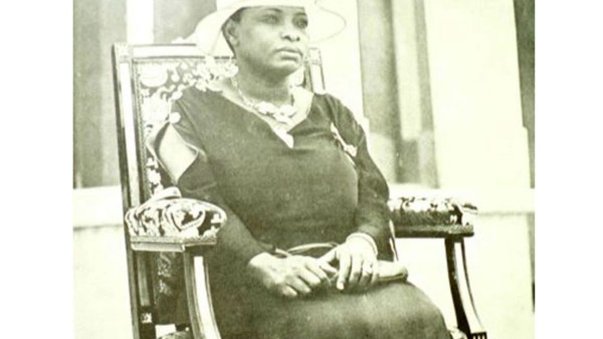| |||||||||
|
|||||||||
|
By:
HENRY LUBEGA | |||||||||
| Posted:
Feb,04-2021 18:20:34
| |||||||||
|
Eighty years ago in February 1941, Buganda Kingdom, the colonial administrators and Native African Church (later named Church of Uganda) were shaken to the core after Buganda Kingdom's Queen Mother, Irene Drusilla Namaganda, announced that she was six months pregnant and she planned to marry her lover.
This was less than three years after the death of her husband Kabaka Daudi Chwa, the 34th king of Buganda and father to the new king Edward Muteesa II.
Much as her announcement shocked the establishments, the revelation of who her lover was, not only stunned them, but caused uproar. Her husband-to-be was the Rev Peter Kigozi who was a few years older than Namaganda's son Muteesa II. Some of Namaganda's critics said "she was getting married to a boy-member of the Fumbe Clan." The unenviable duty of informing the kingdom's parliament (Lukiiko), the church leadership and colonial government fell on then Buganda prime minister Martin Luther Nsibirwa. Though there was outright opposition from the Lukiiko, Nsibirwa, the church and colonial government did not object to the wishes of the Queen Mother. Viewed by the Lukiiko and Ganda public as a scandal, premier Nsibirwa, then Governor of Uganda Charles Dundas and Bishop Simon Cyril Edgar Stuart, the head of the Anglican Church, consented to the marriage. Dundas issued a special marriage licence to allow the couple avoid any banns. As if that was not enough, even Bishop Stuart wrote to the Archbishop of Canterbury to explain the situation under which the wedding was conducted. Breaking church rules Earlier in 1914 at the age of 18, Irene Drusilla Namaganda, a daughter of a clergyman, got married to Kabaka Daudi Chwa. Namaganda was so strong a Christian that she is the only Namasole on record to have started a church. Present-day St Luke Kibuye Anglican Church was started by Namaganda at her palace at Lusaka. It was then known as Ekanisa ya Namasole (Namasole's church), though the name later changed to Kanisa ya Buladde after her marriage to the Rev Kigozi. It was in this church that the Rev Tefiro Bamutenda wedded the couple during the Lent period of 1941. After that, Rev Bamutenda was regarded as a 'rebel priest' for carrying out the wedding. Another reason was because he was the only priest to baptise children born out of wedlock, which was against the teaching of the Native African Church. Bamutenda was later forced to resign from the church and went back to his home at Kisaala in Buikwe District. Many Baganda loyalists were against the wedding because it was a cultural taboo for a Queen Mother to remarry, and worse still, she remarried to a mukopi (commoner). Because of this, a group of Baganda youth had planned to torch the church and stone the bridal party. But the march to the church was encountered by another group which mentioned a Buganda peace password at the time, buladde (Buganda is at peace). After hearing the word buladde, the group abandoned their mission. From there on the name of the church changed to Ekanisa ya Buladde. Specially permitted wedding For political reasons, the colonial government offered the Queen Mother a trip out of the country before her pregnancy was made public. But Namaganda refused. The British government had suggested that she conceals her pregnancy with a quick trip to South Africa, but she said no. With her refusal, Governor Dundas issued a special marriage licence which allowed them to get married in church without going through the normal church procedure of marriage banns announcements. According to Bishop Stuart's letter to Canterbury of June 16, 1941, he mentioned that Kigozi was "15 to 20 years younger than Namaganda". According to the International Journal of African Historical Studies, Kizito had confirmed being the father of the unborn child to Bishop Stuart who counselled him that "marrying simply to legitimise the child was a bad idea." It was a specially permitted wedding because it was performed during the Christian Lent period. In the Christian practice, no such ceremonies are performed during that period. Though government had consented to the wedding, it preferred it being kept private. The government newspaper at the time, the Uganda Herald of February 19, 1941, in its news from Buganda reported how "British official Temple Perkins had taken the Kabaka hunting," but not to Namasole's wedding. In the public court When the wedding became public, it drew a lot of criticism from Baganda traditionalists. The Lukiiko was the first to fire at the newly-wed couple. The Lukiiko stripped Namaganda of her office and title of Namasole and all the privileges that came with both office and title. Among the privileges included owning land and properties. Her husband was banished from Buganda. Avoiding a clash with the Lukiiko, Governor Dundas sided with the kingdom parliament in punishing the Rev Kigozi. He signed a letter banishing Kigozi from Buganda and restricting Namaganda's movements. Kigozi was banished because as a commoner and a royal court outsider he had trespassed on the royal court and poached the Namasole. But to the traditionalists, it is Namaganda who had married Kigozi because of her status and wealth. "A husband marries; and a wife is married. A man demonstrates his active role in the process by giving bride wealth. The Namasole was one of the wealthiest, most independently powerful, and highest status individuals in the kingdom. She married a man whose work as a schoolmaster put him under the alien authority of the Native Anglican Church and the Protectorate Government in a position that offered less pay and status than even the lowest of official chiefships," wrote the International Journal of African Historical Studies. "How could Kigozi, as a young schoolmaster, offer any meaningful bride wealth for the woman who by virtue of her position was one of the wealthiest individuals in the kingdom? Namaganda even brought Kigozi into her official residence after the wedding, rather than being taken to his... Profoundly reversing the usual gendered marital scripts, she married him." The church was condemned in the court of public opinion for not only condoning sex outside marriage of a senior kingdom official, but also for bending church rules to allow a wedding without banns and during lent. The colonial government was also accused of colluding with the church by issuing a special marriage certificate to bypass the church banns. | |||||||||
|
Source:
Daily Monitor
| |||||||||
|
||||||||||||||||||||||||||||||||||||||||||||||||||||||||||||||||||||||||||||||||||||||||||||||||||||||||||||||
|
||||||||||||||||||||||||||||||||||||||||||||||||||||||||||||||||||||||||||||||||||||||||||||||||||||||||||||||


.jpg)




